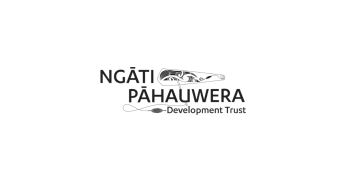Forest Lifeforce Restoration Trust
In 1999 Simon Hall purchased Pohokura Forest (11,348 hectares) In 2005, he also purchased the 6120-hectare Maungataniwha Native Forest and later the bordering Maungataniwha Pine Forest (6,200 hectares). In 2006, the Forest Lifeforce Restoration Trust was formed to provide direction and funding for: “the restoration of threatened species of fauna and flora, to restore the ‘Ngahere Mauri’ in several native forests within the central North Island”,
Forest Lifeforce Trust trustees; Pete Shaw, Simon Hall (Chairman) and Dr John
McLennan
Maungataniwha is well known for being the site where Palaeontologist Joan Wiffin discovered the
first NZ land-dinosaur fossils. Both properties are biodiversity hotspots containing whio, North
Island brown kiwi, karearea, toutouwai, titipounamu, miromiro, kaka, kakariki, long-tailed bats,
Dactylanthus or wood rose, scarlet, red and yellow mistletoe, Pittosporum turneri, and ngutu-kaka.
Maungataniwha and Pohokura blocks have received aerial 1080 operations every three to four years
for the last 15 years. The ground-based trapping programmes focused on core areas of 650 ha at
Maungataniwha and Pohokura have expanded recently through Jobs for Nature Funding to protect
an additional area of 9,000 ha, providing a trapping buffer in Maungataniwha Pines to protect the
Maungataniwha Native Forest.
In 2006, in partnership with Cape Sanctuary, work began at Maungataniwha to locate and fit
transmitters to paired male kiwi. Using Operation Nest Egg, for the first few years half of the
offspring of these males became founders for the Cape Sanctuary Kiwi Kōhanga while others
returned to the forest as 1kg juveniles to boost the population at Maungataniwha.
Operation Nest Egg or ONE, is the process where eggs are uplifted from wild kiwi nests and
incubated and hatched at captive facilities. The chicks are reared in safety either at wild creche sites
or in captivity, to around 1kg, when they can be returned to the forest. In the wild, almost all kiwi
chicks die before reaching adult size mainly due to predation by stoats. The ONE process enables
juvenile kiwi to return to the forest once they are big enough to protect themselves from stoats.
16 years on and after boosting the population by 260 young kiwi, the Maungataniwha population
has more than doubled from an estimated 70 pairs in 2006 to over 140 pairs in 2023.
For the last five years, young kiwi sourced as eggs from Maungataniwha have been released to
Pohokura where kiwi numbers were low. Over 230 kiwi have now been released at Pohokura
surpassing the initial target of 200.
On May 28th, 2022, the trust celebrated the release of the 500th kiwi to be produced from
Maungataniwha kiwi—-, at Pohokura Forest.
2021/22 was a bumper kiwi season, with 91 young kiwi juveniles released to Maungataniwha,
Pohokura or into the captive population. 2022/23 has also been a good year for kiwi breeding with a
further 80+ juveniles being returned to the wild.
To test how effective an intensive trapping programme overlaid with aerial 1080 control, is for
protecting kiwi, 18 were monitored with radio-transmitters post-release at Pohokura. 100%
survived for between 3 months and three years before the transmitters were removed or dropped
off. Some kiwi stuck close to where they were released while others dispersed in all directions into
the wider protected areas of the Whirinaki/Te Pua-a-Tane, and Waipunga Conservation Forests.
In May 2023, the Maungataniwha team and Ngāti Pahauwera hosted Te Whānau ā Apanui, kaimahi
from the Raukūmara Pae Maunga project, and a representative from Ngātapa Tom Blampied, at
Maungataniwha.
We would like to thank Gaye Hawkins, Theresa Thornton, Walker Gilbert, Danny Pohipi, Kuki Green,
Peeti Delamere, Ryan Adams, Pete Shaw, Hirere Ngamoki, Simon Anderson, Tamsin Ward-Smith,
Ora Barlow, and Sheryl Collins for their involvement.
Raukūmara Pae Maunga is at the beginining of their journey to return kiwi to the Houpoto block, on
the western side of the Raukūmara. Houpoto received aerial 1080 in May 2023 and this is rolling on
to cover the entire Raukūmara Forest, some 120,000-hectares in total, over the next few months.
On top of this the Houpoto Trust is installing a 1200-hectare core area mustelid trapping network.
One or two kiwi pairs and single birds have been identified in Houpoto from acoustic recorder
placement which is encouraging. However, the population is so sparse that the Raukūmara team are
considering options for restoring kiwi to the area to ensure that the population is genetically robust.
Sourcing young birds from other nearby areas, such as from Maungataniwha, is one option.
Maungataniwha is the closest, healthiest population that is a suitable source for estabishing kiwi in
the Raukūmara. Ngāti Pahauwera and the Forest Lifeforce Trust indicated their support of Te
Whānau ā Apanui/Houpoto Trust tono for kiwi. A wananga is planned to occur at Maraenui and the
Maungataniwha team and Ngāti Pahauwera will be invited to attend.
As well as a chance for all to meet, it was also an opportunity to lay to rest kiwi that have died during
ONE over the years, and eggshells from kiwi that have hatched successfully


